Wikipedia:Wikipedia Signpost/2011-12-19/Featured content
Panoramas with Farwestern and a good week for featured content
This week, The Signpost interviews Farwestern, who has contributed numerous panoramas to the project (many of them featured pictures). He gives some background information on his new featured picture (above), and shares his favourite panoramas and his tips for those who wish to make better panoramas.
The new featured picture: This new featured picture was the best shot from three climbs of the mountain. I tried earlier in August 2009 and made the summit but the conditions were very smoggy due to a wildfire in north eastern Oregon. In this October attempt, conditions were just perfect (and that doesn't happen very often in Washington State): right after a snowstorm and with a temperature of 24 °F (−4 °C). A subsequent attempt yielded footage that didn't have the "wow" factor that this one did. So, you see, the physical energy, time, and effort expended was truly only something that a dedicated artist might expend a few times in a lifetime.
The mountain has a special place in my family's story. My father was once a mountain climber and journalist for the Tacoma News Tribune. He climbed the mountain both before and after the explosion. In 1980 he rode with President Carter and select members of the press, via helicopter, to survey the site to educate the president about the disaster. My father considers his coverage of the event to be the highlight of his career, and my brother and I grew up exploring the wilderness around the mountain and grew to love and respect it.
Favourite panoramas: It's hard for me to choose a single favorite. I aspire to communicate the essence of a place as holistically as possible, and that inspired me towards capturing everything; in the form of many 360-degree panoramas, which are like virtual worlds and capture a special time and place in a way that really wasn't possible before recent technology. However, if I had to choose only four images it would be the new featured picture, this one of Mount Ellinor, and two on my own site: Hurricane Ridge covered in snow and El Capitan at night. I'm working on a project to create an interactive experience that captures many of the highlights of the western United States. A lot of these images aren't yet published on Wikipedia, but they will be soon.
Creating panoramas: My suggestions for those interested in capturing panoramas are threefold:
- I spend huge amounts of time studying topographical maps of various outdoor areas. When I have a good understanding of the geography then I can usually predict places that will yield good results. You can usually tell where sunsets will look best by looking at where the sun will be relative to the environment. Then you can plan adventures around ideal setups. There is always that random-inspiration factor that sometimes happens but I find I am more "lucky" when I plan or do research about the place before going.
- Worry less about the camera and more about composition. Panoramas are a different art because the idea is to capture as much as possible in a creative, beautiful way. Anyone can find a single, beautiful angle in almost any place, but imagine how hard it must be to take an ordinary place and make everything there interesting or beautiful. The classic tricks apply, like framing, rule-of-thirds, lines, contrast, but some new ones also, like how to get the sun in the shot without flare (by stitching two photos together: one with the sun blocked, and one without, so the top-half can be inserted over the non-flaired bottom).
- Go places that other people aren't going. This is probably the biggest thing I try to do. A lot of the art is in getting to, and returning safely from distant, remote places. Images that offer something new are interesting. You can change a perspective by showing a common thing at night, or from a strange projection.
Featured articles
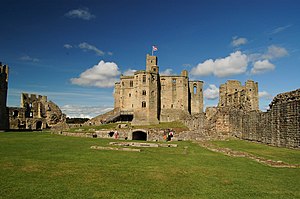
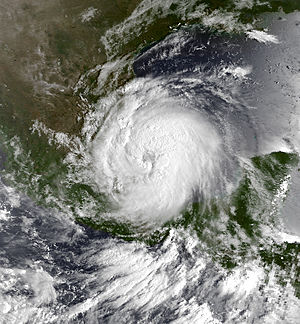
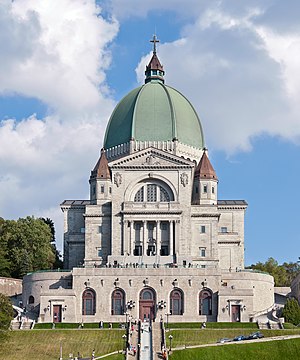
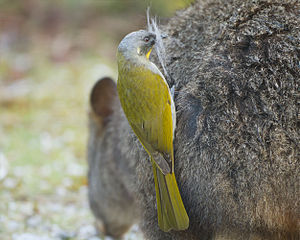
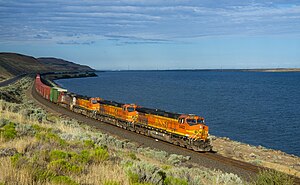
Eight featured articles were promoted this week:
- Oswald Watt (nom) by Ian Rose. Watt, born on 11 February 1878 in Bournemouth, England, moved to Sydney as an infant. After receiving his education in Britain, Watt returned to Australia and in 1911 became the first Australian to qualify for a Royal Aero Club flying certificate. During the First World War he first fought in the French Foreign Legion, later transferring to the Australian Flying Corps in 1916. After receiving numerous awards for his service during the war, Watt left the military to pursue business interests. He drowned at Bilgola Beach, New South Wales, on 21 May 1921.
- Piano music of Gabriel Fauré (nom) by Tim riley. The new featured article, dealing with all piano compositions by Gabriel Fauré, was created by Tim as "Fauré's piano works are not so very numerous, and [I] think a single article covering them all is probably better than a series of short articles on the various pieces". The article covers 13 nocturnes, 13 barcarolles, six impromptus and four valses-caprices, which are rich in classical restraint and understatement.
- M-185 (Michigan highway) (nom) by Imzadi1979 and Mitchazenia. M-185 circles the tourist destination of Mackinac Island in Michigan, stretching for 8.004 miles (12.881 km). The highway is unattached to any others and is said to be the only one in the United States from which cars and other motor vehicles are banned. For a period it was also the only highway in the US never to experience an automobile accident. All that ended in 2005, when the island's firetruck nicked the island's ambulance on the highway while responding to a call.
- Warkworth Castle (nom) by Nev1. Warkworth Castle in the English county of Northumberland is a ruined castle founded in the 12th century. King Henry II gave the castle to Roger fitz Richard and it descended through his heirs until 1345, when it was taken over by the Percy family, one of the most powerful dynasties in northern England. Parts of the stone castle date from the 14th and 15th centuries when various owners added and remodelled parts, but it has been in ruins since the English Civil War. Today it is cared for by English Heritage and open to the public (pictured on right).
- RAF Uxbridge (nom) by Harrison49. RAF Uxbridge was a Royal Air Force base located on a 44.6-hectare (110-acre) plot of land in Uxbridge on the westernmost border of Greater London. Open to the public until 1939, after the start of World War II the base was secured and its flight squad, No. 11 Group RAF, was put in charge of the aerial defense of London during the Battle of Britain. The base closed in 2010, with many of its units relocated to RAF Northolt.
- Hurricane Gert (1993) (nom) by Hylian Auree and 12george1. Gert, a Category 2 tropical cyclone, originated from a tropical wave in the south-western Caribbean. It struck Central America and Mexico in September 1993, causing 96 deaths as it hopped between sea and land, eventually dissipating over the Pacific ocean. The damage was estimated at US$170 million (pictured on right).
- 68th New York Volunteer Infantry Regiment (nom) by Coemgenus. The 68th New York Volunteer Infantry Regiment consisted mainly of German immigrants and was organized three months after the start of the American Civil War. Under several commanders, including one fired for drunkenness and a German prince, the regiment fought in both the eastern and western theatres, seeing heavy losses at Chancellorsville and Gettysburg. It was disbanded in November 1865.
- 1689 Boston revolt (nom) expanded by Magicpiano and nominated by DCI2026. A popular uprising on April 18, 1689, the Boston revolt involved provincial militia and citizens revolting against Sir Edmund Andros, then governor of the Dominion of New England. Andros and his followers, defended by only 25 soldiers and a frigate, were quickly swept from power in a bloodless struggle; they were then replaced by members of governments that existed before the dominion.
Featured lists
Two featured lists were promoted this week:
- Kansas City Cowboys (AA) all-time roster (nom) by Neonblak. The American Association baseball team the Kansas City Cowboys had only 44 players in their two-season lifespan, from 1888 to 1889. One of these players, "Slidin' Billy" Hamilton, went on to enter the National Baseball Hall of Fame. After two losing seasons, the Cowboys joined the Western Association as the Kansas City Blues in 1890.
- K-Ci & JoJo discography (nom) by Michael Jester. Brothers Cedric "K-Ci" Hailey and Joel "JoJo" Hailey, better known by their stage names K-Ci and Jojo, have released five studio albums, four compilation albums, fifteen singles, and fifteen music videos since their debut in 1995 with the single "If You Think You're Lonely Now". Of these, the best-performing were their earlier albums; their most recent album, Love, failed to chart.
Featured pictures
Eight featured pictures were promoted this week:
- Poster for Island of Lost Men (nom, related article), restored by Centpacrr and nominated by Crisco 1492. This original poster for the 1939 film Island of Lost Men, direct by Kurt Neumann and starring Anna Mae Wong, J. Carrol Naish, and Anthony Quinn, advertises "Thrills! Mystery! Adventure!". Although the film received mixed critical reception, the featured picture nomination was passed unanimously.
- Musk duck (nom, related article), by JJ Harrison. Hailing from southern Australia and Tasmania, the Musk Duck – subject of our new featured picture – lives most of its life in water and is known to have difficulty taking off and landing. The only living member of its genus, the Musk Duck is not considered endangered despite a dwindling population. This specimen was photographed in Sandford, Tasmania.
- Yellow-throated Honeyeater stealing hair (nom, related article), by JJ Harrison. Another picture from JJ Harrison's trip to Malaleuca (see previous coverage), this new featured picture depicts a Yellow-throated Honeyeater stealing hair from a Tasmanian Pademelon for lining its nest. The behaviour, previously mentioned in Did You Know? in February 2009, extends to collecting hair from dogs, horses, and humans. In the words of reviewer Chick Bowen, "a photograph illustrating behavior that's documented and significant (as opposed to something silly as [sometimes seen at featured picture candidates]) seems ideal for an FP" (right).
- Tasmanian Scrubwren (nom, related article), by JJ Harrison. Another featured picture from Maleuca, this image depicts a Tasmanian Scrubwren perched on a branch. The Tasmanian Scrubwren is endemic to Tasmania and King Island. Its familial relations are unclear, with some suggesting that it is in fact a subspecies of the White-browed Scrubwren.
- Crepuscular rays at Sunset near Waterberg Plateau (nom, related article) by Alchemist-hp. Raising opposition at featured picture candidates due to the existence of two featured pictures (and a former featured picture) of the phenomenon, the nomination passed 9 to 4. It depicts crepuscular rays, rays of sunlight that appear to radiate from a single point in the sky. The rays often appear near dawn and dusk, when columns of sunlit air separated by darker cloud-shadowed regions are more apparent (below).
- Panorama of Mount St. Helens (nom, related article) created by Farwestern and nominated by Dusty777. Mount St. Helens, located in Skamania County, Washington, is a 8,365-foot (2,550 m) tall volcano most famous for its 1980 eruption. Farwestern gives us background information on the picture above (above).
- Oratoire Saint-Joseph du Mont-Royal (nom, related article) by Paolo Costa. The new featured picture (right) depicts Saint Joseph's Oratory, the largest church in Canada. The building, constructed beginning in 1904, has a prominent dome that is the third largest of its kind.
- BNSF GE Dash-9 C44-9W Kennewick - Wishram WA (nom, related article) created by Kabelleger and nominated by Tomer T. After consternation on behalf of reviewers about coloration of the subject, several BNSF GE Dash 9-44CW locomotives pulling cars, it was established that the shade of orange was accurate. The nomination passed unanimously, with the original picture (right) strongly preferred over an edited alternative.
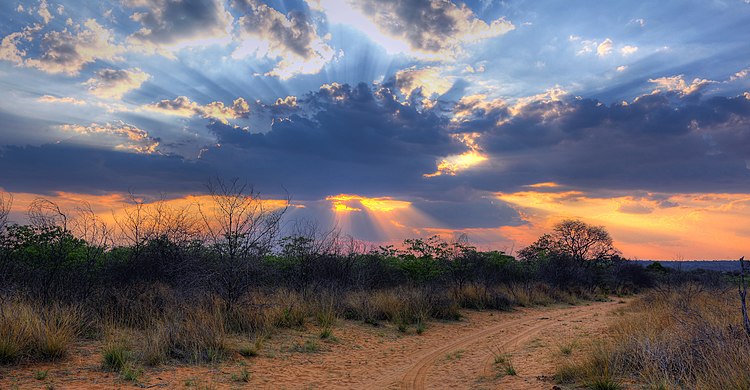




Discuss this story
It's loooong. ResMar 04:10, 24 December 2011 (UTC)[reply]